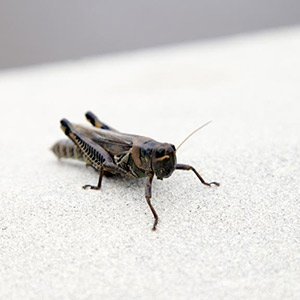Description
| Size | 1/2 to 2 in. |
| Color | green, red, brown, or black and may have markings of a different color |
| Body Structure | head, thorax, abdomen, six legs, two long antennae (called feelers), two pairs of legs, and two sets of wings that lay flat against the body. |
| Characteristics | Crickets use their antennae to find food and detect motion in potential prey. They are omnivores who will eat just about anything. Crickets consume other insects and plant-based items, especially those that are decaying. However, these insects are opportunistic and will eat paper, fresh fruit and vegetables, fungi, and fabric. Some species also demonstrate cannibalistic tendencies, feeding on other weak or injured crickets.
Crickets communicate by rubbing their wings together to create a chirping sound. Chirping, also called stridulation, is most often done by males to attract females or ward off other males. Aside from mating, crickets tend to be solitary animals, living alone. |
| Habitat & Behavior | Crickets live on every continent except Antarctica, with the most species found in tropical locales. Outdoors, crickets live under rocks, logs, leaves, grass, soil, and debris. Some types, especially the aptly-named house cricket, prefer to live indoors where they seek out cracks and crevices for shelter and protection of their eggs. |
| Commonly Active | Spring / Summer / Fall |
| Risks of Infestations | Because they eat other insects, crickets are an asset to your property when outdoors. However, when they find their way into your home, crickets can be both disruptive and destructive. House crickets will eat fruit, vegetables, clothing, paper, linens, and other items they find around your home. Their chirping, which occurs at night, can also be loud enough to disrupt or prevent sleep. |
